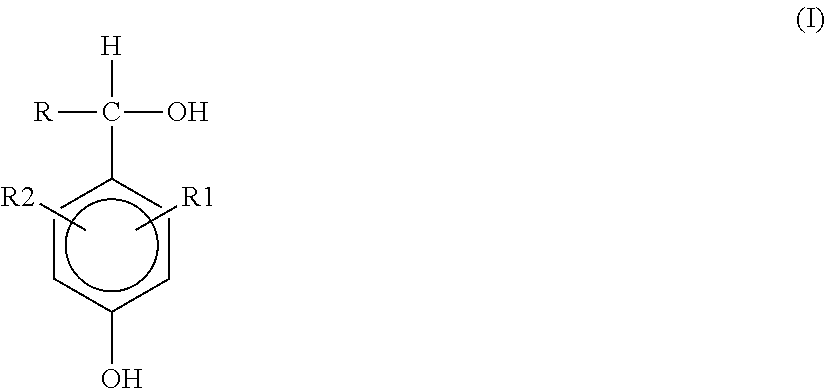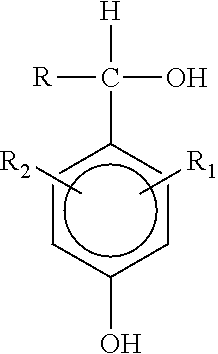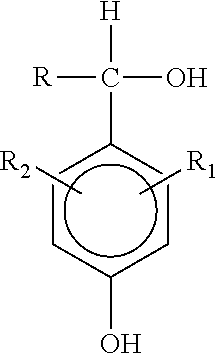Methods and compositions for styrene inhibition via in situ generation of quinone methides
a technology of in situ generation and styrene, which is applied in the direction of thickeners, nuclear engineering, nuclear elements, etc., can solve the problems of increased undesired polymerization rate, loss of desired monomer end-product, and toxicity of nitrated phenol-based retarders
- Summary
- Abstract
- Description
- Claims
- Application Information
AI Technical Summary
Problems solved by technology
Method used
Image
Examples
examples
[0035]The effect of a combined treatment of di-tertiary butyl hydroxybenzyl alcohol (DTBHBA) and dodecylbenzene sulfonic acid (DDBSA) on the thermal polymerization of styrene at 120° C. was evaluated by comparing polymer formation utilizing the following procedure.
[0036]Uninhibited styrene (5 mL) was placed in a test tube and the appropriate amount of polymerization inhibitor(s) was added, either a known inhibitor compound 4-benzylidene-2,6-ditert-butyl-2,5 cyclohexadien-1-one (CAS 7078-98-0) as a comparative inhibitor, or the claimed inhibitor composition [DTBHBA / DDBSA]. The tube was capped with a rubber septum and argon was bubbled through the liquid at 10 mL / min. for 3 minutes. The tubes were then placed in an oil bath heated to 120° C. Once the temperature reached 120° C., the stop clock was started and this time was considered as time zero. About 5 ml of the sample was removed from the test tube at varying time intervals for up to 4 hours and measured precisely before pouring i...
PUM
| Property | Measurement | Unit |
|---|---|---|
| temperatures | aaaaa | aaaaa |
| temperatures | aaaaa | aaaaa |
| temperature | aaaaa | aaaaa |
Abstract
Description
Claims
Application Information
 Login to view more
Login to view more - R&D Engineer
- R&D Manager
- IP Professional
- Industry Leading Data Capabilities
- Powerful AI technology
- Patent DNA Extraction
Browse by: Latest US Patents, China's latest patents, Technical Efficacy Thesaurus, Application Domain, Technology Topic.
© 2024 PatSnap. All rights reserved.Legal|Privacy policy|Modern Slavery Act Transparency Statement|Sitemap



